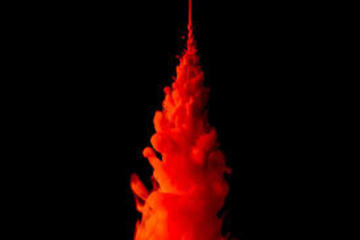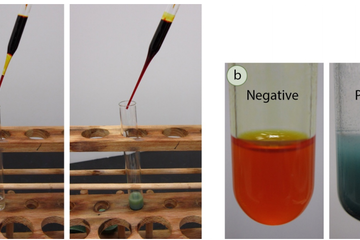We found 14 results that contain "ewa"
Posted on: #iteachmsu

Health concerns - test articles
Common Health Concerns
Understanding common health concerns and what can be done to prevent or treat them can go a long way towards reducing the stress you feel when it comes to your health and the health of those in your care.
Whether you have seen a health story on the news, your child has come home from school with a note about immunizations, or your teenage daughter wants to go to another country on an exchange program, you are looking for information to guide you through the steps toward making informed health decisions. Having easy to understand health information at your fingertips will help you to focus on the key facts and save time.
In this section, there are information topics about some of the most common health concerns, so it is easy for you to find what you are looking for as quickly as possible.
Understanding common health concerns and what can be done to prevent or treat them can go a long way towards reducing the stress you feel when it comes to your health and the health of those in your care.
Whether you have seen a health story on the news, your child has come home from school with a note about immunizations, or your teenage daughter wants to go to another country on an exchange program, you are looking for information to guide you through the steps toward making informed health decisions. Having easy to understand health information at your fingertips will help you to focus on the key facts and save time.
In this section, there are information topics about some of the most common health concerns, so it is easy for you to find what you are looking for as quickly as possible.
Authored by:
Chathuri

Posted on: #iteachmsu


Health concerns - test articles
Common Health Concerns
Understanding common health concerns a...
Understanding common health concerns a...
Authored by:
Friday, Nov 8, 2019
Posted on: #iteachmsu

PEDAGOGICAL DESIGN
How does Finland’s top-ranking education system work?
How does Finland’s top-ranking education system work?
Finland has been a top contender on every Program for International Student Assessment survey.
The country built a comprehensive education structure designed to offer citizens free education with no dead ends.
The inspiration for Finland's approach was American education research and philosophers such as John Dewey.
Finland's education system enjoys a lot of buzz lately. It is considered one of the best education systems in the world. It routinely outperforms the United States in reading, science, and mathematics. And it has been a top performer since the first Program for International Student Assessment (PISA) triennial international survey back in 2000.
But ask someone what's so great about Finland's schools, and you'll typically be supplied with a factoid or three. They have shorter school days. They don't do standardized tests. They all must be smart because the Finnish language is a nightmare.
While these facts are true — except for that last one — they miss Finland's well-raked forests for its trees. Finland's education system works because its entire structure has been around several core principles. First and foremost, equal access to education is a constitutional right. Another important principle is that one should be allowed to choose their educative path, which should never lead to a dead end.
Here's how Finland's education system works to meet those principles.
Finland has been a top contender on every Program for International Student Assessment survey.
The country built a comprehensive education structure designed to offer citizens free education with no dead ends.
The inspiration for Finland's approach was American education research and philosophers such as John Dewey.
Finland's education system enjoys a lot of buzz lately. It is considered one of the best education systems in the world. It routinely outperforms the United States in reading, science, and mathematics. And it has been a top performer since the first Program for International Student Assessment (PISA) triennial international survey back in 2000.
But ask someone what's so great about Finland's schools, and you'll typically be supplied with a factoid or three. They have shorter school days. They don't do standardized tests. They all must be smart because the Finnish language is a nightmare.
While these facts are true — except for that last one — they miss Finland's well-raked forests for its trees. Finland's education system works because its entire structure has been around several core principles. First and foremost, equal access to education is a constitutional right. Another important principle is that one should be allowed to choose their educative path, which should never lead to a dead end.
Here's how Finland's education system works to meet those principles.
Authored by:
Chathuri

Posted on: #iteachmsu


How does Finland’s top-ranking education system work?
How does Finland’s top-ranking education system work?
Finla...
Finla...
Authored by:
PEDAGOGICAL DESIGN
Wednesday, Oct 9, 2019
Posted on: #iteachmsu

ASSESSING LEARNING
Chemical testing overview
Overview
Before spectroscopic analysis (IR, NMR) became commonplace in the organic chemistry lab, chemical tests were heavily relied upon to support compound identification. A chemical test is typically a fast reaction performed in a test tube that gives a dramatic visual clue (a color change, precipitate, or gas formation) as evidence for a chemical reaction. For example, addition of an orange chromic acid reagent to some compounds causes the chromium reagent to change to a blue-green color (Figure 6.37a). This is considered a "positive" test result, and in this case indicates the presence of a functional group that can be oxidized (alcohol or aldehyde). A negative test result is retention of the original color of the reagent, in this case the orange color
Before spectroscopic analysis (IR, NMR) became commonplace in the organic chemistry lab, chemical tests were heavily relied upon to support compound identification. A chemical test is typically a fast reaction performed in a test tube that gives a dramatic visual clue (a color change, precipitate, or gas formation) as evidence for a chemical reaction. For example, addition of an orange chromic acid reagent to some compounds causes the chromium reagent to change to a blue-green color (Figure 6.37a). This is considered a "positive" test result, and in this case indicates the presence of a functional group that can be oxidized (alcohol or aldehyde). A negative test result is retention of the original color of the reagent, in this case the orange color
Authored by:
Chathuri

Posted on: #iteachmsu


Chemical testing overview
Overview
Before spectroscopic analysis (IR, NMR) becam...
Before spectroscopic analysis (IR, NMR) becam...
Authored by:
ASSESSING LEARNING
Monday, Aug 26, 2019
Posted on: Queens group

PEDAGOGICAL DESIGN
Biochemistry
Biochemistry is the application of chemistry to the study of biological processes at the cellular and molecular level. It emerged as a distinct discipline around the beginning of the 20th century when scientists combined chemistry, physiology, and biology to investigate the chemistry of living systems.
tets
1oufi'aofio
DFHAIHF
FGJIFI
lwa fo'i io iaof
afewof
'a foe
tets
1oufi'aofio
DFHAIHF
FGJIFI
lwa fo'i io iaof
afewof
'a foe
Authored by:
chathuri

Posted on: Queens group


Biochemistry
Biochemistry is the application of chemistry to the study of biolog...
Authored by:
PEDAGOGICAL DESIGN
Friday, Oct 11, 2019
Posted on: 12 Best API Testing Tools for 2025

PEDAGOGICAL DESIGN
Child group article by chathu: Dual Crop Farming
Dual crop farming or multiple cropping can be either mixed cropping or intercropping.
Mixed cropping refers to raising two or more types of crops in the same area at the same time. This increases the probability that at least one type of crop will survive even if the entire area experiences adverse conditions such as drought.
Intercropping is similar, but with the addition of planting seeds in a specific pattern or sequence in the field. This allows farmers to maximize yield or productivity and the space available.
Dual crop farming is very popular among farmers because it optimizes the use of equipment, soil, water, and farming supplies; it also maximizes the production of a small farm all year round.
Farmers like that it reduces the risk of total loss from calamities, drought, pests, and diseases. Some good examples of multiple cropping are growing strawberries and watermelons in Florida or wheat and soybeans in addition to corn and canola in the Carolinas.
Mixed cropping refers to raising two or more types of crops in the same area at the same time. This increases the probability that at least one type of crop will survive even if the entire area experiences adverse conditions such as drought.
Intercropping is similar, but with the addition of planting seeds in a specific pattern or sequence in the field. This allows farmers to maximize yield or productivity and the space available.
Dual crop farming is very popular among farmers because it optimizes the use of equipment, soil, water, and farming supplies; it also maximizes the production of a small farm all year round.
Farmers like that it reduces the risk of total loss from calamities, drought, pests, and diseases. Some good examples of multiple cropping are growing strawberries and watermelons in Florida or wheat and soybeans in addition to corn and canola in the Carolinas.
Posted by:
Chathuri Hewapathirana 1

Posted on: 12 Best API Testing Tools for 2025


Child group article by chathu: Dual Crop Farming
Dual crop farming or multiple cropping can be either mixed cropping...
Posted by:
PEDAGOGICAL DESIGN
Wednesday, Jul 30, 2025
Posted on: #iteachmsu

ASSESSING LEARNING
Chemical testing overview
Overview
Before spectroscopic analysis (IR, NMR) became commonplace in the organic chemistry lab, chemical tests were heavily relied upon to support compound identification. A chemical test is typically a fast reaction performed in a test tube that gives a dramatic visual clue (a color change, precipitate, or gas formation) as evidence for a chemical reaction. For example, addition of an orange chromic acid reagent to some compounds causes the chromium reagent to change to a blue-green color (Figure 6.37a). This is considered a "positive" test result, and in this case indicates the presence of a functional group that can be oxidized (alcohol or aldehyde). A negative test result is retention of the original color of the reagent, in this case the orange color Description is the fiction-writing mode for transmitting a mental image of the particulars of a story. Together with dialogue, narration, exposition, and summarization, description is one of the most widely recognized of the fiction-writing modes. As stated in Writing from A to Z, edited by Kirk Polking, description is more than the amassing of details; it is bringing something to life by carefully choosing and arranging words and phrases to produce the desired effect.[6] The most appropriate and effective techniques for presenting description are a matter of ongoing discussion among writers and writing coaches.Description is the fiction-writing mode for transmitting a mental image of the particulars of a story. Together with dialogue, narration, exposition, and summarization, description is one of the most widely recognized of the fiction-writing modes. As stated in Writing from A to Z, edited by Kirk Polking, description is more than the amassing of details; it is bringing something to life by carefully choosing and arranging words and phrases to produce the desired effect.[6] The most appropriate and effective techniques for presenting description are a matter of ongoing discussion among writers and writing coaches.Description is the fiction-writing mode for transmitting a mental image of the particulars of a story. Together with dialogue, narration, exposition, and summarization, description is one of the most widely recognized of the fiction-writing modes. As stated in Writing from A to Z, edited by Kirk Polking, description is more than the amassing of details; it is bringing something to life by carefully choosing and arranging words and phrases to produce the desired effect.[6] The most appropriate and effective techniques for presenting description are a matter of ongoing discussion among writers and writing coaches.Description is the fiction-writing mode for transmitting a mental image of the particulars of a story. Together with dialogue, narration, exposition, and summarization, description is one of the most widely recognized of the fiction-writing modes. As stated in Writing from A to Z, edited by Kirk Polking, description is more than the amassing of details; it is bringing something to life by carefully choosing and arranging words and phrases to produce the desired effect.[6] The most appropriate and effective techniques for presenting description are a matter of ongoing discussion among writers and writing coaches.Description is the fiction-writing mode for transmitting a mental image of the particulars of a story. Together with dialogue, narration, exposition, and summarization, description is one of the most widely recognized of the fiction-writing modes. As stated in Writing from A to Z, edited by Kirk Polking, description is more than the amassing of details; it is bringing something to life by carefully choosing and arranging words and phrases to produce the desired effect.[6] The most appropriate and effective techniques for presenting description are a matter of ongoing discussion among writers and writing coaches.Description is the fiction-writing mode for transmitting a mental image of the particulars of a story. Together with dialogue, narration, exposition, and summarization, description is one of the most widely recognized of the fiction-writing modes. As stated in Writing from A to Z, edited by Kirk Polking, description is more than the amassing of details; it is bringing something to life by carefully choosing and arranging words and phrases to produce the desired effect.[6] The most appropriate and effective techniques for presenting description are a matter of ongoing discussion among writers and writing coaches.Description is the fiction-writing mode for transmitting a mental image of the particulars of a story. Together with dialogue, narration, exposition, and summarization, description is one of the most widely recognized of the fiction-writing modes. As stated in Writing from A to Z, edited by Kirk Polking, description is more than the amassing of details; it is bringing something to life by carefully choosing and arranging words and phrases to produce the desired effect.[6] The most appropriate and effective techniques for presenting description are a matter of ongoing discussion among writers and writing coaches.Description is the fiction-writing mode for transmitting a mental image of the particulars of a story. Together with dialogue, narration, exposition, and summarization, description is one of the most widely recognized of the fiction-writing modes. As stated in Writing from A to Z, edited by Kirk Polking, description is more than the amassing of details; it is bringing something to life by carefully choosing and arranging words and phrases to produce the desired effect.[6] The most appropriate and effective techniques for presenting description are a matter of ongoing discussion among writers and writing coaches.Description is the fiction-writing mode for transmitting a mental image of the particulars of a story. Together with dialogue, narration, exposition, and summarization, description is one of the most widely recognized of the fiction-writing modes. As stated in Writing from A to Z, edited by Kirk Polking, description is more than the amassing of details; it is bringing something to life by carefully choosing and arranging words and phrases to produce the desired effect.[6] The most appropriate and effective techniques for presenting description are a matter of ongoing discussion among writers and writing coaches.Description is the fiction-writing mode for transmitting a mental image of the particulars of a story. Together with dialogue, narration, exposition, and summarization, description is one of the most widely recognized of the fiction-writing modes. As stated in Writing from A to Z, edited by Kirk Polking, description is more than the amassing of details; it is bringing something to life by carefully choosing and arranging words and phrases to produce the desired effect.[6] The most appropriate and effective techniques for presenting description are a matter of ongoing discussion among writers and writing coaches.Description is the fiction-writing mode for transmitting a mental image of the particulars of a story. Together with dialogue, narration, exposition, and summarization, description is one of the most widely recognized of the fiction-writing modes. As stated in Writing from A to Z, edited by Kirk Polking, description is more than the amassing of details; it is bringing something to life by carefully choosing and arranging words and phrases to produce the desired effect.[6] The most appropriate and effective techniques for presenting description are a matter of ongoing discussion among writers and writing coaches.Description is the fiction-writing mode for transmitting a mental image of the particulars of a story. Together with dialogue, narration, exposition, and summarization, description is one of the most widely recognized of the fiction-writing modes. As stated in Writing from A to Z, edited by Kirk Polking, description is more than the amassing of details; it is bringing something to life by carefully choosing and arranging words and phrases to produce the desired effect.[6] The most appropriate and effective techniques for presenting description are a matter of ongoing discussion among writers and writing coaches.Description is the fiction-writing mode for transmitting a mental image of the particulars of a story. Together with dialogue, narration, exposition, and summarization, description is one of the most widely recognized of the fiction-writing modes. As stated in Writing from A to Z, edited by Kirk Polking, description is more than the amassing of details; it is bringing something to life by carefully choosing and arranging words and phrases to produce the desired effect.[6] The most appropriate and effective techniques for presenting description are a matter of ongoing discussion among writers and writing coaches.Description is the fiction-writing mode for transmitting a mental image of the particulars of a story. Together with dialogue, narration, exposition, and summarization, description is one of the most widely recognized of the fiction-writing modes. As stated in Writing from A to Z, edited by Kirk Polking, description is more than the amassing of details; it is bringing something to life by carefully choosing and arranging words and phrases to produce the desired effect.[6] The most appropriate and effective techniques for presenting description are a matter of ongoing discussion among writers and writing coaches.Description is the fiction-writing mode for transmitting a mental image of the particulars of a story. Together with dialogue, narration, exposition, and summarization, description is one of the most widely recognized of the fiction-writing modes. As stated in Writing from A to Z, edited by Kirk Polking, description is more than the amassing of details; it is bringing something to life by carefully choosing and arranging words and phrases to produce the desired effect.[6] The most appropriate and effective techniques for presenting description are a matter of ongoing discussion among writers and writing coaches.
Before spectroscopic analysis (IR, NMR) became commonplace in the organic chemistry lab, chemical tests were heavily relied upon to support compound identification. A chemical test is typically a fast reaction performed in a test tube that gives a dramatic visual clue (a color change, precipitate, or gas formation) as evidence for a chemical reaction. For example, addition of an orange chromic acid reagent to some compounds causes the chromium reagent to change to a blue-green color (Figure 6.37a). This is considered a "positive" test result, and in this case indicates the presence of a functional group that can be oxidized (alcohol or aldehyde). A negative test result is retention of the original color of the reagent, in this case the orange color Description is the fiction-writing mode for transmitting a mental image of the particulars of a story. Together with dialogue, narration, exposition, and summarization, description is one of the most widely recognized of the fiction-writing modes. As stated in Writing from A to Z, edited by Kirk Polking, description is more than the amassing of details; it is bringing something to life by carefully choosing and arranging words and phrases to produce the desired effect.[6] The most appropriate and effective techniques for presenting description are a matter of ongoing discussion among writers and writing coaches.Description is the fiction-writing mode for transmitting a mental image of the particulars of a story. Together with dialogue, narration, exposition, and summarization, description is one of the most widely recognized of the fiction-writing modes. As stated in Writing from A to Z, edited by Kirk Polking, description is more than the amassing of details; it is bringing something to life by carefully choosing and arranging words and phrases to produce the desired effect.[6] The most appropriate and effective techniques for presenting description are a matter of ongoing discussion among writers and writing coaches.Description is the fiction-writing mode for transmitting a mental image of the particulars of a story. Together with dialogue, narration, exposition, and summarization, description is one of the most widely recognized of the fiction-writing modes. As stated in Writing from A to Z, edited by Kirk Polking, description is more than the amassing of details; it is bringing something to life by carefully choosing and arranging words and phrases to produce the desired effect.[6] The most appropriate and effective techniques for presenting description are a matter of ongoing discussion among writers and writing coaches.Description is the fiction-writing mode for transmitting a mental image of the particulars of a story. Together with dialogue, narration, exposition, and summarization, description is one of the most widely recognized of the fiction-writing modes. As stated in Writing from A to Z, edited by Kirk Polking, description is more than the amassing of details; it is bringing something to life by carefully choosing and arranging words and phrases to produce the desired effect.[6] The most appropriate and effective techniques for presenting description are a matter of ongoing discussion among writers and writing coaches.Description is the fiction-writing mode for transmitting a mental image of the particulars of a story. Together with dialogue, narration, exposition, and summarization, description is one of the most widely recognized of the fiction-writing modes. As stated in Writing from A to Z, edited by Kirk Polking, description is more than the amassing of details; it is bringing something to life by carefully choosing and arranging words and phrases to produce the desired effect.[6] The most appropriate and effective techniques for presenting description are a matter of ongoing discussion among writers and writing coaches.Description is the fiction-writing mode for transmitting a mental image of the particulars of a story. Together with dialogue, narration, exposition, and summarization, description is one of the most widely recognized of the fiction-writing modes. As stated in Writing from A to Z, edited by Kirk Polking, description is more than the amassing of details; it is bringing something to life by carefully choosing and arranging words and phrases to produce the desired effect.[6] The most appropriate and effective techniques for presenting description are a matter of ongoing discussion among writers and writing coaches.Description is the fiction-writing mode for transmitting a mental image of the particulars of a story. Together with dialogue, narration, exposition, and summarization, description is one of the most widely recognized of the fiction-writing modes. As stated in Writing from A to Z, edited by Kirk Polking, description is more than the amassing of details; it is bringing something to life by carefully choosing and arranging words and phrases to produce the desired effect.[6] The most appropriate and effective techniques for presenting description are a matter of ongoing discussion among writers and writing coaches.Description is the fiction-writing mode for transmitting a mental image of the particulars of a story. Together with dialogue, narration, exposition, and summarization, description is one of the most widely recognized of the fiction-writing modes. As stated in Writing from A to Z, edited by Kirk Polking, description is more than the amassing of details; it is bringing something to life by carefully choosing and arranging words and phrases to produce the desired effect.[6] The most appropriate and effective techniques for presenting description are a matter of ongoing discussion among writers and writing coaches.Description is the fiction-writing mode for transmitting a mental image of the particulars of a story. Together with dialogue, narration, exposition, and summarization, description is one of the most widely recognized of the fiction-writing modes. As stated in Writing from A to Z, edited by Kirk Polking, description is more than the amassing of details; it is bringing something to life by carefully choosing and arranging words and phrases to produce the desired effect.[6] The most appropriate and effective techniques for presenting description are a matter of ongoing discussion among writers and writing coaches.Description is the fiction-writing mode for transmitting a mental image of the particulars of a story. Together with dialogue, narration, exposition, and summarization, description is one of the most widely recognized of the fiction-writing modes. As stated in Writing from A to Z, edited by Kirk Polking, description is more than the amassing of details; it is bringing something to life by carefully choosing and arranging words and phrases to produce the desired effect.[6] The most appropriate and effective techniques for presenting description are a matter of ongoing discussion among writers and writing coaches.Description is the fiction-writing mode for transmitting a mental image of the particulars of a story. Together with dialogue, narration, exposition, and summarization, description is one of the most widely recognized of the fiction-writing modes. As stated in Writing from A to Z, edited by Kirk Polking, description is more than the amassing of details; it is bringing something to life by carefully choosing and arranging words and phrases to produce the desired effect.[6] The most appropriate and effective techniques for presenting description are a matter of ongoing discussion among writers and writing coaches.Description is the fiction-writing mode for transmitting a mental image of the particulars of a story. Together with dialogue, narration, exposition, and summarization, description is one of the most widely recognized of the fiction-writing modes. As stated in Writing from A to Z, edited by Kirk Polking, description is more than the amassing of details; it is bringing something to life by carefully choosing and arranging words and phrases to produce the desired effect.[6] The most appropriate and effective techniques for presenting description are a matter of ongoing discussion among writers and writing coaches.Description is the fiction-writing mode for transmitting a mental image of the particulars of a story. Together with dialogue, narration, exposition, and summarization, description is one of the most widely recognized of the fiction-writing modes. As stated in Writing from A to Z, edited by Kirk Polking, description is more than the amassing of details; it is bringing something to life by carefully choosing and arranging words and phrases to produce the desired effect.[6] The most appropriate and effective techniques for presenting description are a matter of ongoing discussion among writers and writing coaches.Description is the fiction-writing mode for transmitting a mental image of the particulars of a story. Together with dialogue, narration, exposition, and summarization, description is one of the most widely recognized of the fiction-writing modes. As stated in Writing from A to Z, edited by Kirk Polking, description is more than the amassing of details; it is bringing something to life by carefully choosing and arranging words and phrases to produce the desired effect.[6] The most appropriate and effective techniques for presenting description are a matter of ongoing discussion among writers and writing coaches.Description is the fiction-writing mode for transmitting a mental image of the particulars of a story. Together with dialogue, narration, exposition, and summarization, description is one of the most widely recognized of the fiction-writing modes. As stated in Writing from A to Z, edited by Kirk Polking, description is more than the amassing of details; it is bringing something to life by carefully choosing and arranging words and phrases to produce the desired effect.[6] The most appropriate and effective techniques for presenting description are a matter of ongoing discussion among writers and writing coaches.
Authored by:
Chathuri

Posted on: #iteachmsu


Chemical testing overview
Overview
Before spectroscopic analysis (IR, NMR) becam...
Before spectroscopic analysis (IR, NMR) becam...
Authored by:
ASSESSING LEARNING
Friday, Apr 2, 2021

